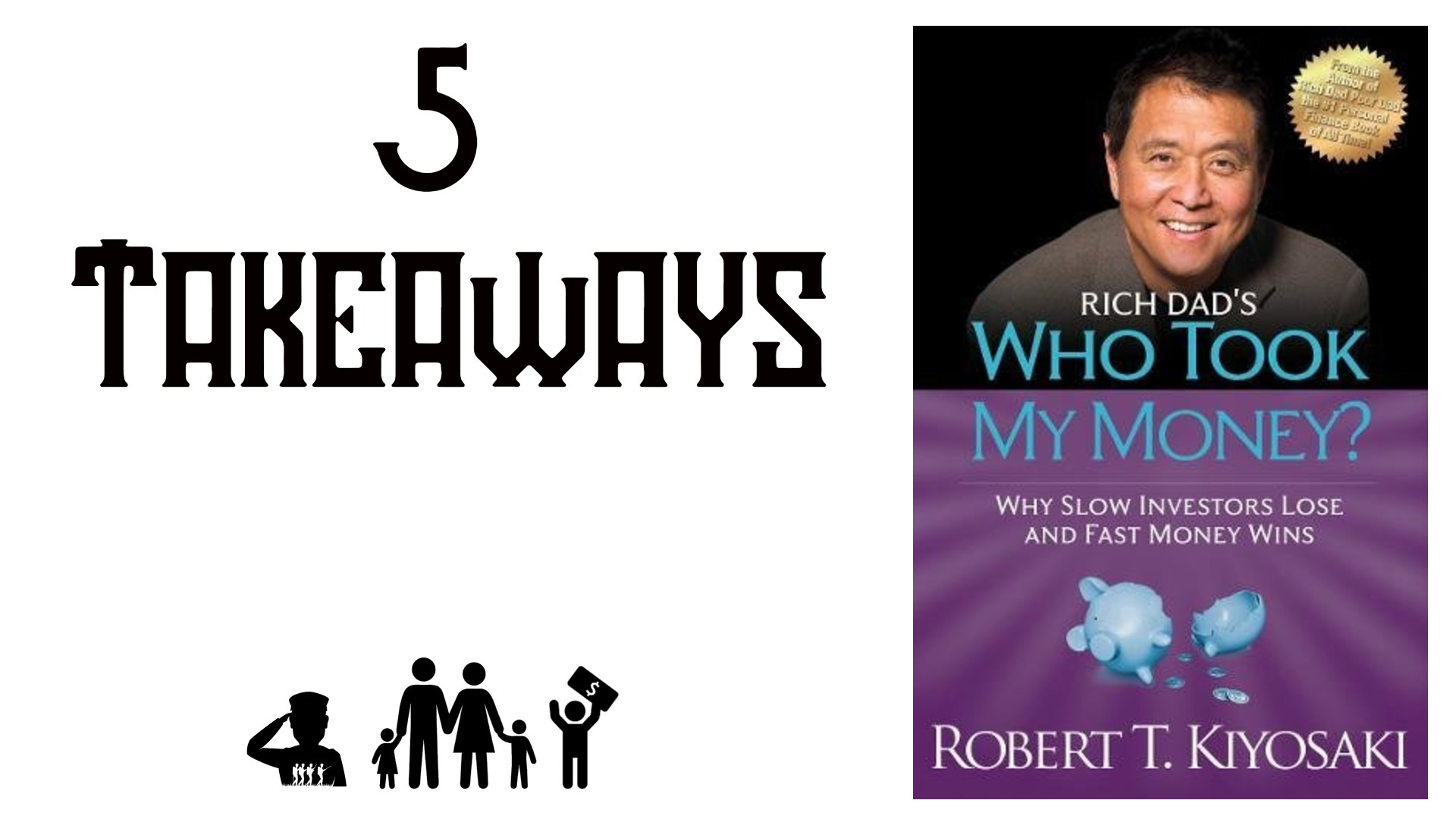You may know that Robert Kiyosaki is by far my favorite author of all time. Reading his work is like eating comfort food down South. I just finished reading “Rich Dad’s Who Took My Money?” and it was another fantastic book.
“Rich Dad’s Who Took My Money?” focuses on the velocity of money and how the rich keep their money flowing through various investments to build and maintain wealth. The velocity of money is why the rich keep getting richer, and the poor keep getting poorer.
The velocity of money, in a nutshell, tells us to obtain an investment with as little of our money as possible, get our money out as soon a possible, keep the asset, and leverage tax benefits on the profits from the asset. Once our money is out of the asset, it is considered to be in an infinite return.
Using the above concept of the velocity of money, think about standard financial guidance given to 99% of Americans. Work hard for cash, invest 10% of your income in 401k and mutual funds, and take your money out at age 65 at the highest possible tax rates.
Who do you think will generate more wealth? The investor who uses $50,000 to buy five homes over ten years or the person who invests $50,000 into a 401k and lets it sit there until age 65?
The above example is what you will have to decide for yourself. Many people want all the perks of business, real estate, commodities, and paper assets (stocks), but lack the will to obtain the knowledge, education, or training required to become successful in these pursuits. You will get nothing for free. With that, let’s get into my takeaways.
1) The 20-10-5 rule is something that all investors should know. The 20-10-5 rules state that the stock market will be in favor for roughly 20 years, then 10 years other investments will be in favor (real estate, commodities), and finally, every 5 years, there will be some sort of black swan event to shake things up.
2) The 20-10-5 is more of a rule than a calendar. It states that investment opportunities change over time, and you should be looking to the subsequent investments while one is running hot. For example, stocks are doing exceptionally well, the same for real estate. At this point, how do commodities look?
3) Look through the eyes of an investor. Being an investor allows you to see the future potential of anything you lay your eyes on, possibly before anyone else. Someone may look at a $7,000 Ford Focus car and think it is worthless. As an investor, you may know that you can rent that car out and make $800/month. You can have your money entirely back to you in less than ten months, and the vehicle is in an infinite return. The car is now printing cash for you.
4) There are four asset classes— business, real estate, paper assets, and commodities. To become rich, you will need to leverage two, three, or even all four of these, depending on how fast you want to get rich.
5) Knowing how and when to switch between the different asset classes will allow you to prepare for any downturn that may happen. If paper assets are high, you may want to move into gold and silver. If real estate is low, you will want to move in at this time. When others are fearful, that’s when you get greedy. That is what investors do.
Rich Dad had a wealth acceleration plan. It called for a person to start a business because of leverage, control, and tax benefits. From there, you invest profits into real estate because of the tax benefits and depreciation. Finally, the money travels into paper assets.
Do you see how this is very different from the standard worker’s mentality and plan? They work hard for money, get taxed at the highest rate, and put their money straight into the stock market. The money has no tax benefits or leverage. That is why it takes 40 years to get rich.
“Rich Dad’s Who Took My Money” is another Robert Kiyosaki classic. To be honest, if I weren’t writing a blog and books, I would just keep reading his books over and over. I have never felt so connected to an author in my life. Everything he says is golden to me.
And best of all, it works. My wife and I have amassed $100,000 in investments on top of our three properties. Now it is time to seek out other investments and accelerate to even more wealth. Not because we are greedy but because we simply understand that we can.
Read My Books for Free: Free Kindle Books Schedule
Check out our Merchandise Shop on Redbubble: (here)
Follow us on our Facebook Page (here)
Join our Facebook group (here)
Follow us on Pinterest at:
Disclosure: I am not a financial advisor or money manager, and any knowledge is given as guidance and not direct actionable investment advice. I am an Amazon Affiliate. Please research any investment vehicles that are being considered. I wrote this article myself, and it expresses my own opinions. I am not receiving compensation for it. I have no business relationship with any company whose stock is mentioned in this article.

Leave a Reply